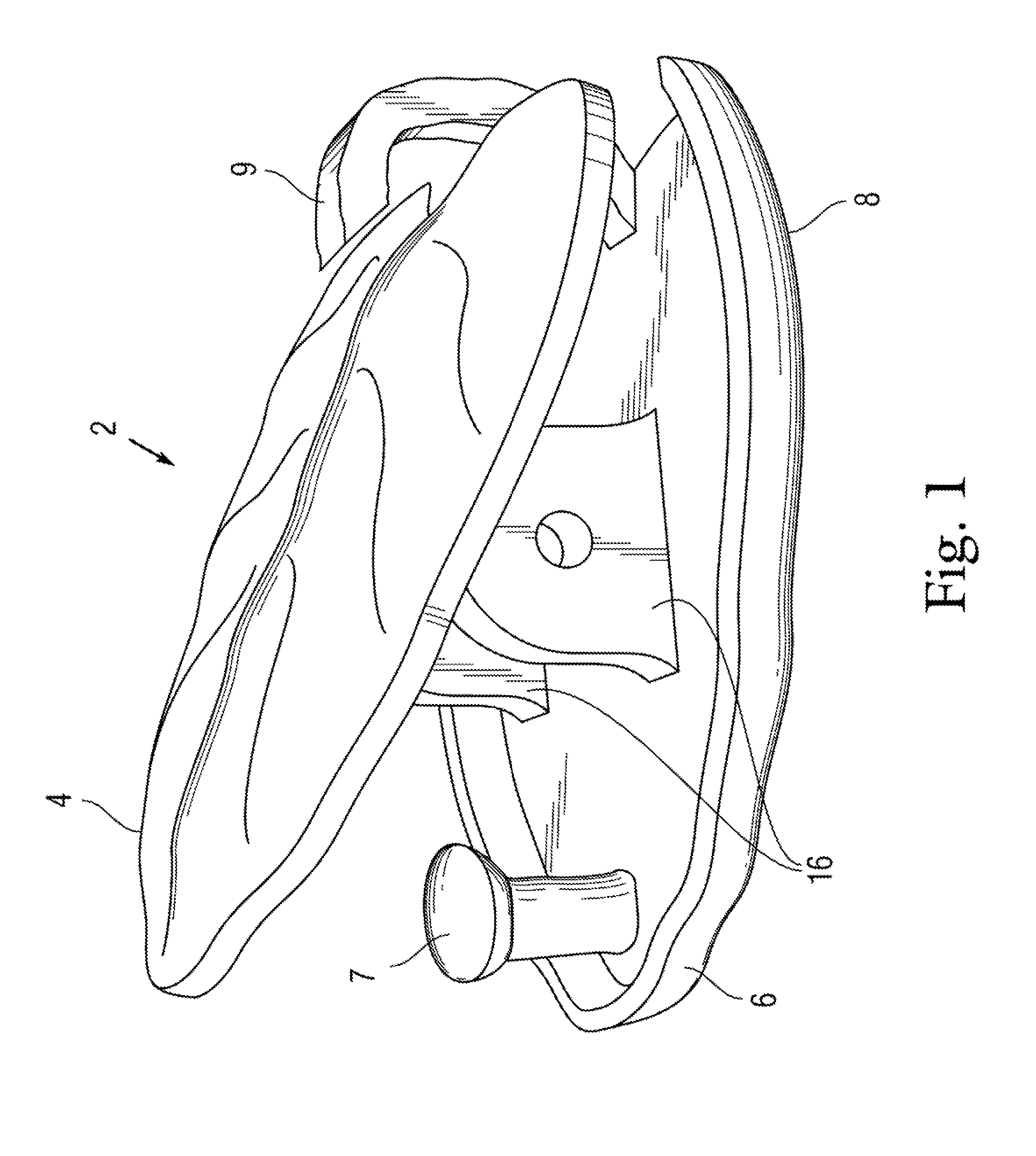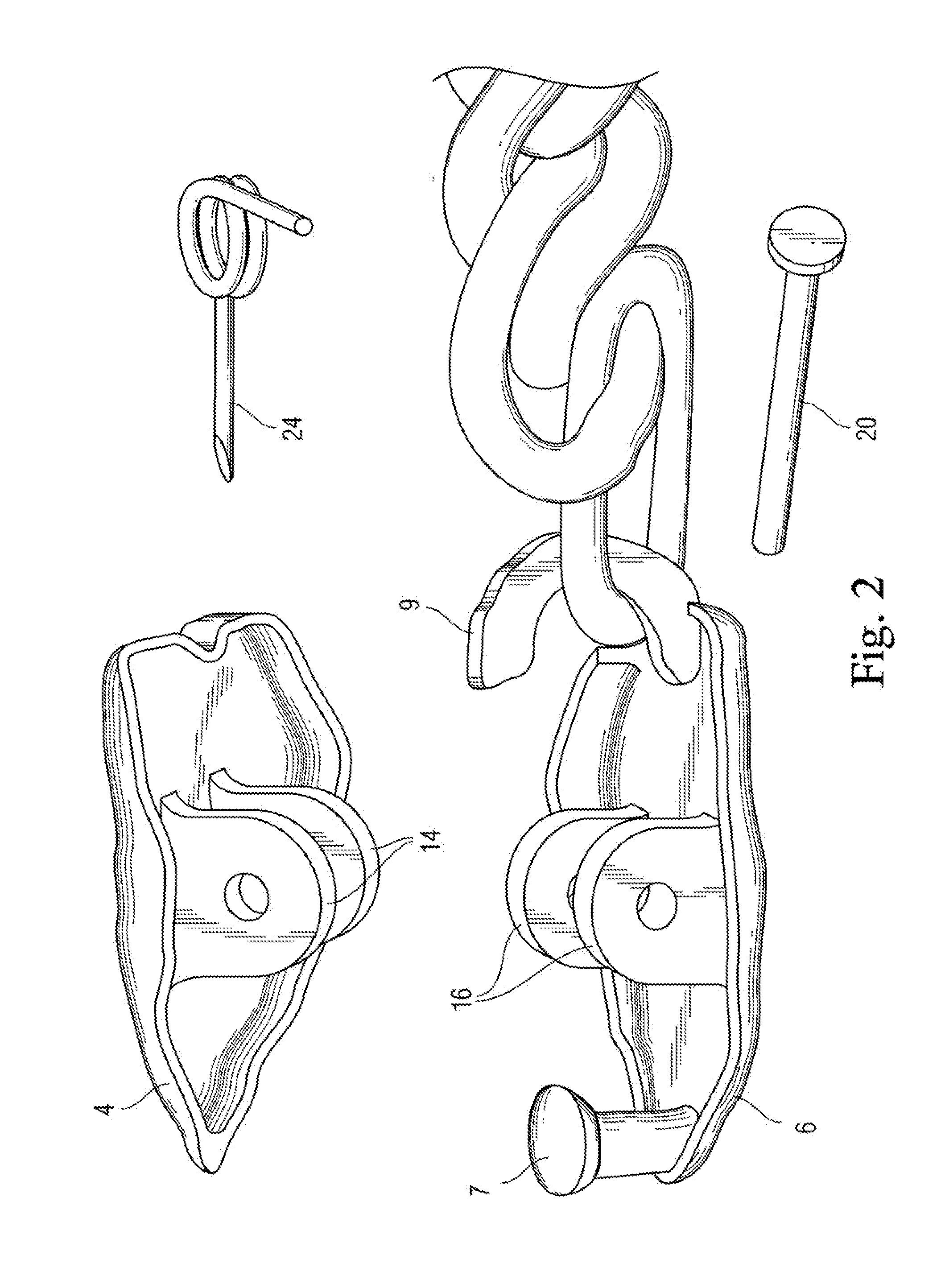Decorative jewelry double clasp with single spring for bracelets & necklaces
a double-action, jewelry technology, applied in the field of single-action double-action clasps, can solve the problems of requiring double the effort to remove both ends of the chain, difficult opening and closing, and broken jewelry chains, and achieves the effects of simple mechanism, fine, delicate and ornamental appearance, and high stability and security
- Summary
- Abstract
- Description
- Claims
- Application Information
AI Technical Summary
Benefits of technology
Problems solved by technology
Method used
Image
Examples
Embodiment Construction
[0017]The present invention is a jewelry clasp with a more efficient single-pivot spring-biased hinge for double-sided locking of opposing ends of a chain together.
[0018]FIG. 1 shows a perspective view of an embodiment of the jewelry clasp 2 in an open position ready for insertion of both ends of a chain, while FIGS. 2-3 are exploded / disassembled views illustrating the individual components. With collective reference to FIGS. 1-3, the double-sided jewelry clasp 2 generally comprises a rocker plate 4 offset from and pivotally mounted atop a base plate 6 in a facing relation, at a centrally-located spring biased hinge 8. Both rocker plate 4 and base plate 6 may be formed in any of a variety of ornamental shapes, including complementary leaves as shown. They need not be uniform or flat, but must facilitate pivoting of rocker plate 4. The offset hinge 8 further comprises an opposing pair of yokes 14, 16 extending from the center of each of the rocker plate 4 and base plate 6, respective...
PUM
 Login to View More
Login to View More Abstract
Description
Claims
Application Information
 Login to View More
Login to View More - R&D
- Intellectual Property
- Life Sciences
- Materials
- Tech Scout
- Unparalleled Data Quality
- Higher Quality Content
- 60% Fewer Hallucinations
Browse by: Latest US Patents, China's latest patents, Technical Efficacy Thesaurus, Application Domain, Technology Topic, Popular Technical Reports.
© 2025 PatSnap. All rights reserved.Legal|Privacy policy|Modern Slavery Act Transparency Statement|Sitemap|About US| Contact US: help@patsnap.com



